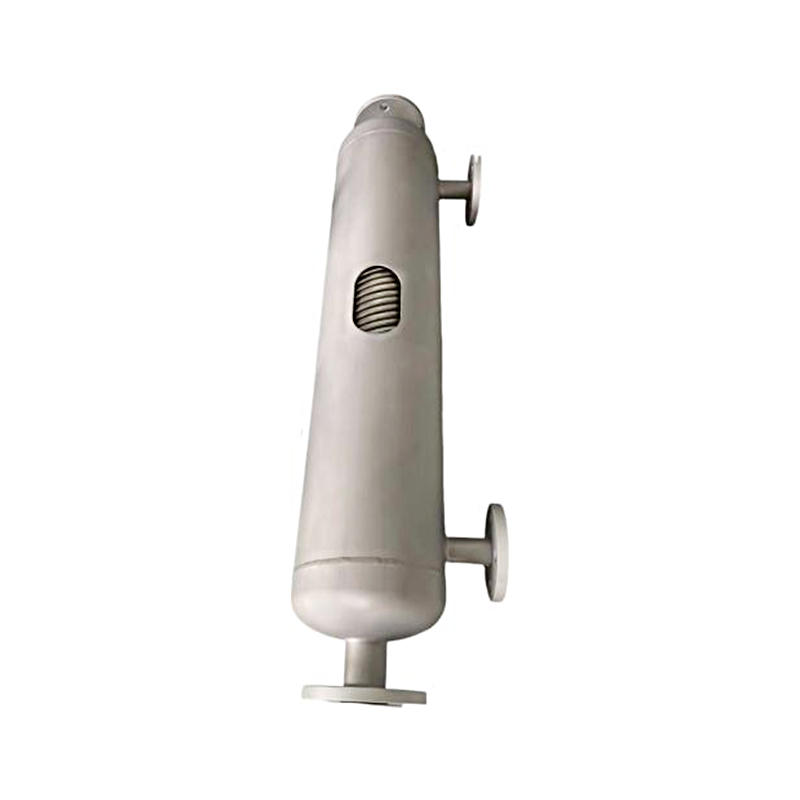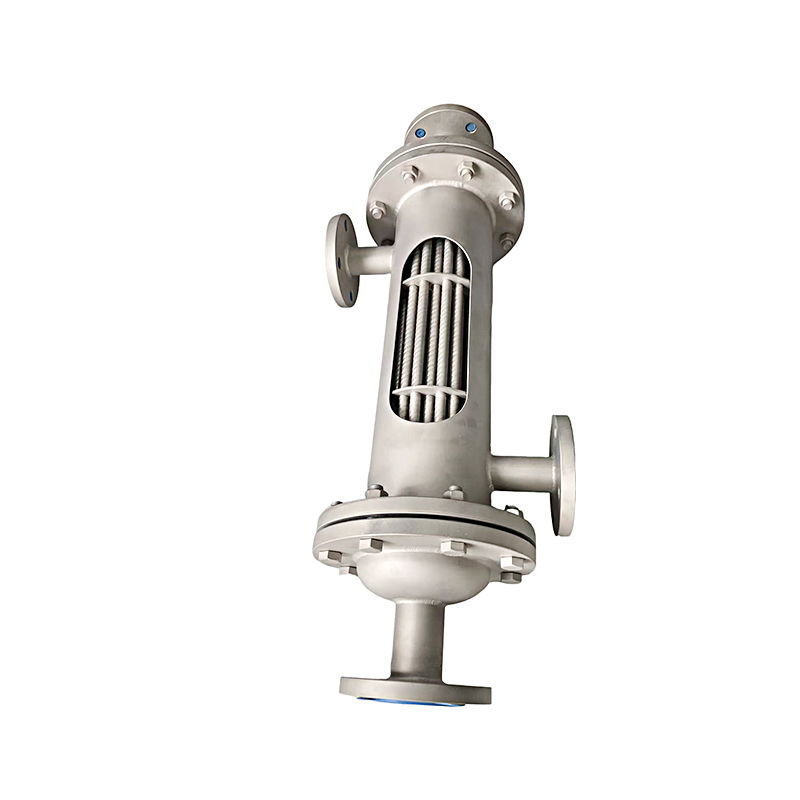What is the structure of a stainless steel spiral wound tube heat exchanger?
Release Time : 2025-11-20
The tube bundle structure of the stainless steel spiral wound tube heat exchanger is the core of its efficient heat transfer and reliable operation, and its design integrates innovative concepts from fluid mechanics and materials science. This structure uses a central cylinder as support, and multiple stainless steel heat exchange tubes are tightly wound in a spiral trajectory using a specific process, forming a multi-layered, multi-turn three-dimensional flow channel. This winding method not only extends the fluid path but also drives the fluid to form a secondary circulation through the centrifugal force of the spiral channel, significantly enhancing the turbulence effect, greatly reducing the boundary layer thickness, and significantly improving heat transfer efficiency compared to traditional equipment.
The spiral winding method of the tube bundle is divided into two types: single spiral and multi-spiral. The single spiral structure is simple and has a long fluid flow path, suitable for scenarios with small heat transfer temperature differences; the multi-spiral method divides the tube bundle into multiple independent units, realizing multi-pass fluid flow and increasing the heat transfer area within a limited shell diameter, further improving efficiency. Regardless of the method, the stability of the tube bundle is fixed by positioning rods or support rings to avoid vibration and wear caused by fluid scouring. Meanwhile, a uniform gap is maintained between the spiral tubes to ensure that the shell-side fluid flows evenly across the tube bundle surface, reducing flow dead zones and optimizing heat exchange performance.
In terms of material selection, the tube bundle typically uses corrosion-resistant materials such as 316L stainless steel, duplex stainless steel, or titanium alloys to adapt to the media requirements of different operating conditions. For example, in chloride-containing environments, 316L stainless steel has excellent pitting corrosion resistance; in high-temperature and high-pressure scenarios, duplex stainless steel offers better strength and corrosion resistance. Some high-end applications also use silicon carbide composite tubes, whose thermal conductivity far exceeds that of metal materials and whose temperature resistance is significantly improved, making them suitable for extreme conditions such as photovoltaic polycrystalline silicon production.
The manufacturing process of the tube bundle directly affects equipment performance. Automated argon arc welding or laser welding technology is widely used for the connection between tubes and tube sheets to ensure weld strength and sealing, with leakage rates strictly controlled to an extremely low level. During the winding process, the pitch and winding angle of the tube bundle need to be precisely controlled to balance heat transfer efficiency and pressure drop requirements. For example, a small pitch design can increase the heat exchange area but may increase fluid resistance; a large pitch has the opposite effect. Therefore, practical design requires optimization based on media characteristics and process requirements.
The elastic design of the tube bundle is key to its adaptability to complex operating conditions. By setting free sections at both ends of the tube bundle or adopting a floating head structure, the equipment can automatically compensate for thermal expansion stress, avoiding leakage risks caused by temperature difference deformation. This design enables the stainless steel spiral wound tube heat exchanger to handle large temperature difference conditions, such as BOG recondensation in LNG liquefaction processes or high-pressure heater applications in thermal power plants, with long-term operational stability significantly superior to traditional equipment.
Maintenance convenience is also an important consideration in tube bundle design. The modular structure supports online replacement of individual tube bundles without overall shutdown, significantly reducing maintenance time. For example, after adopting this structure, a refinery achieved extremely high equipment availability and significantly reduced annual maintenance costs. Furthermore, the self-cleaning properties of the spiral channel reduce fouling deposits, extend cleaning cycles, and further reduce operating costs.
With technological advancements, tube bundle structures continue to innovate. Irregular spiral winding technology optimizes fluid distribution through non-uniform pitch design, further improving heat transfer efficiency; 3D printing technology enables one-time molding of complex flow channels, significantly reducing customization costs. These innovations have led to the continuous expansion of the application of stainless steel spiral wound tube heat exchangers in fields such as chemical distillation, hydrogen energy, and nuclear power waste heat recovery, making them an important force in promoting the green transformation of industry.








